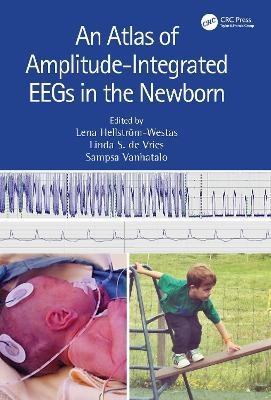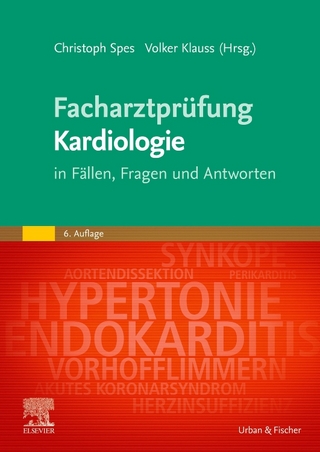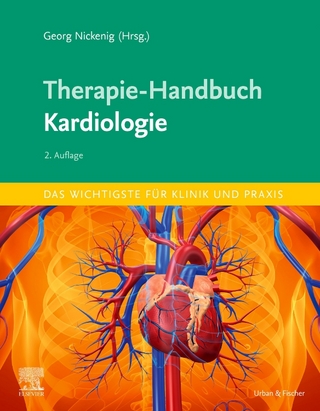
An Atlas of Amplitude-Integrated EEGs in the Newborn
CRC Press (Verlag)
978-1-032-25850-8 (ISBN)
- Noch nicht erschienen (ca. Februar 2025)
- Versandkostenfrei innerhalb Deutschlands
- Auch auf Rechnung
- Verfügbarkeit in der Filiale vor Ort prüfen
- Artikel merken
This new edition updates the definitive clinical atlas-textbook on interpreting continuous amplitude-integrated electroencephalography monitoring in neonatal units. It presents a comprehensive instructive overview linking tracings, scans, neuro-imaging, real-time tracing clips, and detailed clinical scenarios and is an invaluable guide to all those needing to learn how to use aEEG for the best and safest results. An online quiz is available to enhance training and performance.
This third edition of the aEEG atlas summarizes the experience and evidence of more than 40 years of aEEG monitoring in the newborn and also addresses the development and future of brain monitoring.
Lena Hellström-Westas, MD, PhD, is Professor of Perinatal Medicine, Department of Women's and Children's Health, Uppsala University and University Hospital, Uppsala, Sweden. Linda S de Vries, MD, PhD, is Emeritus Professor of Neonatal Neurology at Utrecht and Leiden Universities, The Netherlands.
1. Monitoring the newborn brain 2. Brain activity and generation of EEG signal 3. Application of electrodes, recording caveats and artefacts 4. Seizures 5. Neonatal encephalopathy in the full-term infant due to hypoxia-ischemia and focal brain lesion Case 5.1: Full-term infant with mild HIE and slow recovery Case 5.2: Mild encephalopathy with evolution to moderate encephalopathy Case 5.3: Full-term infant, mild HIE with evolution to moderate HIE Case 5.4: Full-term infant with moderate HIE and predominant Injury to the thalami Case 5.5: Full-term infant with moderate HIE and predominant injury to the thalami Case 5.6: Full-term infant with severe HIE after acute intrapartum event Case 5.7:Full-term infant with postnatal collapse who was treated with hypothermia Case 5.8: Full-term infant with Severe HIE Case 5.9: Term infant with severe HIE following a sentinel event Case 5.10: Late preterm infant with moderate asphyxia and rapid recovery Case 5.11: Hemorrhage in the thalamus in a late preterm infant Case 5.12: Full-term infant with a temporal lobe hemorrhage Case 5.13: Full-term infant with a frontal lobe hemorrhage Case 5.14: Full-term infant with transposition of the great arteries and a large subdural hemorrhage Case 5.15: Full-term infant with Cortical stroke Case 5.16: Full-term infant with posterior branch MCA Case 5.17: Full-term infant with MCA stroke Case 5.18: Full-term infant with cerebral sinovenous thrombosis 6. Neonatal encephalopathy due to infections, metabolic disorders and genetic causes Case 6.1: Full-term infant with hypoglycemia due to insulinoma Case 6.2: Full-term infant with hypoglycemia Case 6.3: Full-term neonate with Molybdenum cofactor deficiency Case 6.4: Ornithine transcarbamylase (OTC) deficiency Case 6.5: Full-term infant with Non-Ketotic Hyperglycinaemia Case 6.6: Pyridoxine-responsive and pyridoxine-dependent seizures Case 6.7: Full-term infant with a peroxisomal disorder Case 6.8: Full-term infant with acute bilirubin encephalopathy Case 6.9: Full-term infant with Group B streptococcus meningitis Case 6.10: Full-term infant with HSV Meningoencephalitis Case 6.11: Late preterm infant with Rotavirus associated encephalitis Case 6.12: Full-term infant with Incontinentia Pigmenti Case 6.13: Full-term infant with Hemimegalencephaly Case 6.14: Hemimegalencephaly Case 6.15: Full-term infant with cortical malformation Case 6.16: Full-term infant with channelopathy Case 6.17: Full-term infant with Developmental and epileptic encephalopathy (DEE) Case 6.18: Full-term infant with Intracranial tumor (teratoma) 7. The preterm aEEG Case 7.1: Preterm infant with grade III intraventricular hemorrhage and posthemorrhagic ventricular dilatation Case 7.2: Severe IVH/PVHI and Refractory Seizures Case 7.3: Very Preterm infant with severe asphyxia Case 7.4: Preterm infant with severe intrapartum asphyxia Case 7.5: Vein of Galen malformation in late preterm infant Case 7.6: Encephalitis with Bacillus cereus in a preterm infant 8. Other EEG trends and computational measures 9. Advancing Neonatal Neurocritical Care with Brain Monitoring Case 9.1: Term infant with congenital heart defect Case 9.2: Preterm infant with pericardial effusion, severe metabolic acidosis, and brain injury Case 9.3: Multimodal monitoring in a preterm infant Case 9.4: Full-term infant with progressing mild to moderate encephalopathy with seizures
| Erscheint lt. Verlag | 21.2.2025 |
|---|---|
| Zusatzinfo | 6 Tables, black and white; 26 Line drawings, color; 2 Line drawings, black and white; 169 Halftones, color; 51 Halftones, black and white; 195 Illustrations, color; 53 Illustrations, black and white |
| Verlagsort | London |
| Sprache | englisch |
| Maße | 210 x 280 mm |
| Themenwelt | Medizin / Pharmazie ► Medizinische Fachgebiete ► Gynäkologie / Geburtshilfe |
| Medizinische Fachgebiete ► Innere Medizin ► Kardiologie / Angiologie | |
| Medizin / Pharmazie ► Medizinische Fachgebiete ► Pädiatrie | |
| ISBN-10 | 1-032-25850-0 / 1032258500 |
| ISBN-13 | 978-1-032-25850-8 / 9781032258508 |
| Zustand | Neuware |
| Haben Sie eine Frage zum Produkt? |
aus dem Bereich


